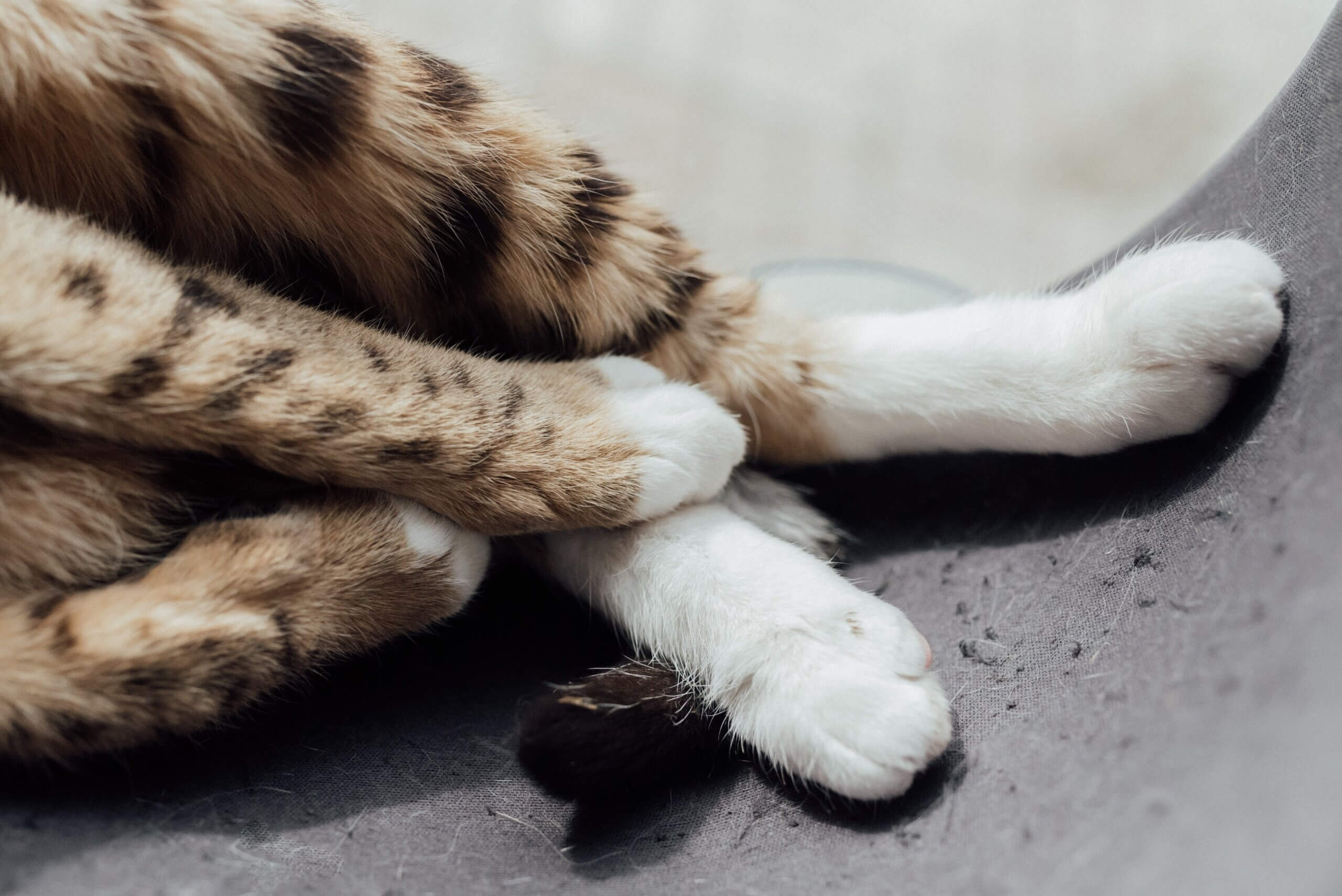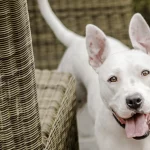Communication is an essential element in fostering a strong bond between you and your feline companion. Although cats don’t communicate verbally like humans, they have a rich body language that expresses their feelings, needs, and even warnings.
Understanding these non-verbal cues— from tail movements and ear positions to vocalisations and body posture—can greatly enhance your relationship with your pet and ensure their well-being.
Table of Contents
Understanding Your Cat’s Body Language
1. Tail Movements
A cat’s tail can be likened to a mood barometer. It is one of the most expressive parts of a cat’s body, often giving away their emotional state.
Straight Up: When a cat’s tail is held high, it signifies happiness and confidence. They might greet you with their tail straight up, signalling their pleasure at your presence.
Question Mark Shape: A tail curved at the top, similar to a question mark, is a sign of friendliness and playful mood.
Puffed Up: If your cat’s tail is puffed up, it’s a sign of fear, aggression, or surprise. They may be feeling threatened and preparing to defend themselves.
Tucked Beneath or Around the Body: A tail tucked beneath or wrapped around the body indicates anxiety or submission.
Discover the heartwarming efforts of Phoenix Cat Rescues, the compassionate haven where feline lives are transformed. At ComfortedKitty, our mission aligns with theirs, providing support through our platform, comfortedkitty.com, where tales of rescue and care intertwine. Together, we uplift the spirits of both cats and their human companions, making a positive impact in the Phoenix community and beyond.
2. Ear Positions
Ears are another key indicator of a cat’s mood and focus.
Forward: Ears pointing forward show that the cat is content, interested, and comfortable.
Sideways or Back: When a cat’s ears are turned sideways or back, it could be a sign they are feeling annoyed, anxious, or fearful.
Flat Against the Head: Ears flat against the head signal extreme fear or aggression. If your cat displays this, it’s best to give them some space.
3. Vocalizations
Cats have a broad range of vocalisations, each conveying different messages.
Purring: While purring is often associated with contentment, cats may also purr when they are stressed or unwell, as a self-soothing mechanism.
Meowing: Cats use meowing primarily to communicate with humans. The meaning can vary widely based on pitch, volume, and frequency, and can denote anything from a greeting to a demand for food.
Hissing: A hissing cat is scared and defensive. It’s best to give a hissing cat space and avoid touching them.
4. Body Posture
A cat’s overall body posture can give you a quick read on their mood.
Relaxed and Curled Up: A cat that’s curled up and relaxed is content and comfortable.
Arched Back: An arched back, especially combined with a puffed-up tail, is a clear sign of fear or aggression.
Belly Exposed: A cat lying on its back exposing its belly could either be a sign of trust and comfort or a defensive posture, ready to use their claws and teeth if necessary. Context is key here.
How Owners Can Respond
Fear and Aggression: If your cat’s tail is puffed up, ears are flat against their head, or they’re hissing, it’s a clear sign of fear or aggression. In this case, it’s best to give your cat space and remove any immediate threats if possible. Forcing interaction could lead to a defensive attack. Also, try speaking in a calm, soothing tone to help ease their anxiety.
Contentment and Relaxation: When your cat’s body language signals contentment — a high tail, forward-pointing ears, relaxed body, or purring — they are likely receptive to your attention. Gentle petting, particularly around the areas where cats groom each other like the neck, chin, and the base of the tail, can be appreciated. Always approach slowly and gently, and stop if they show signs of discomfort.
Playfulness: A tail curved at the top like a question mark often signals a playful mood. Engage with your cat using interactive toys, like a feather wand or a laser pointer, to channel their energy and encourage bonding. Be aware of overstimulation, however, which could lead to a swat or a nip.
Anxiety or Submission: If your cat’s tail is tucked beneath or wrapped around their body, they might be feeling anxious. Try to identify and remove the source of their stress. Maintain a calm environment and consider using synthetic feline facial pheromone diffusers, which can help ease anxiety.
Trust and Comfort: A cat lying on its back, exposing its belly, could be a sign of trust and comfort. Despite the temptation, many cats do not appreciate belly rubs, as the belly is a vulnerable area. Respect their trust by not touching the belly unless you’re sure they enjoy it.
Final Words:
Understanding your cat’s pet language is fundamental to building a deep, meaningful bond with your feline friend. Their purrs, meows, body posture, and behaviors all hold clues about their feelings and needs.
For example, a slow blink from your cat is often considered a “cat kiss,” a sign of trust and affection. However, it’s also essential to acknowledge that cats have a strong instinct for exploration and independence. This desire may lead them outside your home, where they may become lost.
This is where microchipping comes into play. Microchipping your cat is a simple, yet crucial step in ensuring their safety. If they ever wander off, this tiny chip, implanted under their skin, carries your contact information. This way, if your cat is found and scanned by a vet or animal shelter, they can be swiftly and safely returned home.
By understanding your cat’s language and taking the necessary precautions, like microchipping, you’re ensuring that your bond remains strong and your feline friend stays safe.





